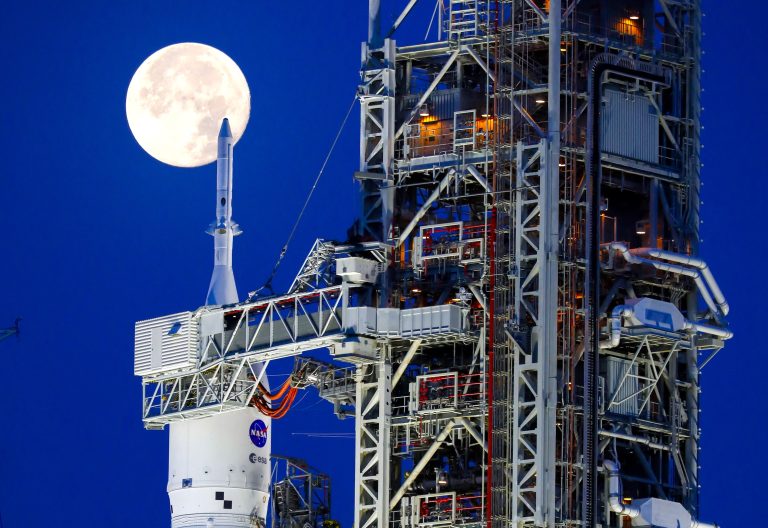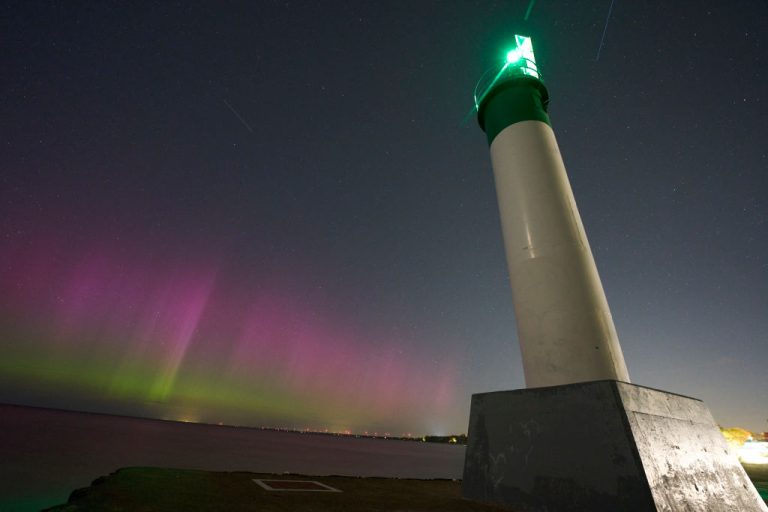SpaceX will attempt the first ever private spacewalk next week, which will be a test of trailblazing equipment, including slim spacesuits and a cabin with no airlock.
That will be one of the riskiest missions yet for Elon Musk’s space company.
A billionaire entrepreneur, a retired military fighter pilot and two SpaceX employees are poised to launch on Tuesday, Aug. 27, aboard a modified Crew Dragon craft.
The crew will then embark on a 20-minute spacewalk 434 miles (700 km) into space two days later.
Until now, walking into the empty expanse of space has only been done by government astronauts on the International Space Station (ISS), 250 miles above Earth.
Success
You are now signed up for our newsletter
Success
Check your email to complete sign up
SpaceX’s five-day mission has been dubbed Polaris Dawn, and will swing in an oval-shaped orbit, passing as close to Earth as 190 km (118 miles) and as far as 1,400 km (870 miles).
That’s the farthest any humans will have ventured since the end of the United States’ Apollo moon program in 1972.
- America ‘On Schedule’ for 2026 Moon Landing, NASA Head Says Following Chinese Chang’e-6 Mission
- Northern Lights: Solar Storm Makes Spectacular Auroras Visible to Millions
“They’re pushing the envelope in multiple ways,” retired NASA astronaut Garrett Reisman said in an interview. “They’re also going to a much higher altitude, with a more severe radiation environment than we’ve been to since Apollo.”
The mission is an opportunity for SpaceX to advance technologies that could be used on the moon and Mars.
Far outside the protective bubble of Earth’s atmosphere, the electronics and shielding on Crew Dragon and spacesuits will be tested as they pass through parts of the Van Allen belt.
That belt is an area where charged particles coming mainly from the sun can disrupt satellites’ electronics and affect human health.
“That’s an additional risk that you don’t face when you just stay in low-Earth orbit and go up to the ISS,” Reisman said.
Not a ‘normal’ operation
The Polaris spacewalk will take place on the mission’s third day, but preparation will begin about 45 hours in advance.
The Crew Dragon’s entire cabin will be depressurized and exposed to the vacuum of space. While only two of the astronauts will float outside, tethered by an oxygen line, the whole crew will depend on their spacesuits for life support.
Days before the spacewalk, the crew will begin a “pre-breathe” process to fill the cabin with pure oxygen and remove any nitrogen from the air.
Nitrogen, if present in astronauts’ bloodstreams in space, could form bubbles, block blood flow and lead to decompression sickness, known as “the bends,” as with scuba divers who return too quickly to the water’s surface.
The crew will use an ultrasound device to monitor any bubble formation, one of many tools to be used in the mission to inform dozens of scientific experiments.
This will provide researchers a rare peek into how astronauts might fare on the moon’s surface or elsewhere in deep space.
“It gives us a very unique opportunity to test these vehicles in such a very unique environment,” said Emmanuel Urquieta, vice chair for aerospace medicine at the University of Central Florida’s internal medicine department.
There are no such U.S. standards or laws for spaceflight safety in private missions like Polaris.
Usually, astronaut safety on NASA missions is rigorously overseen by the agency.
SpaceX officials and the Polaris crew said during an Aug. 19 (Monday) news conference they have planned for an array of contingency scenarios if something during the mission goes wrong.
Reisman said he knows the Polaris crew and believes they are prepared to handle any unexpected mishaps.
“But there’s not a lot of room for error,” he stated
Reuters contributed to this report.







